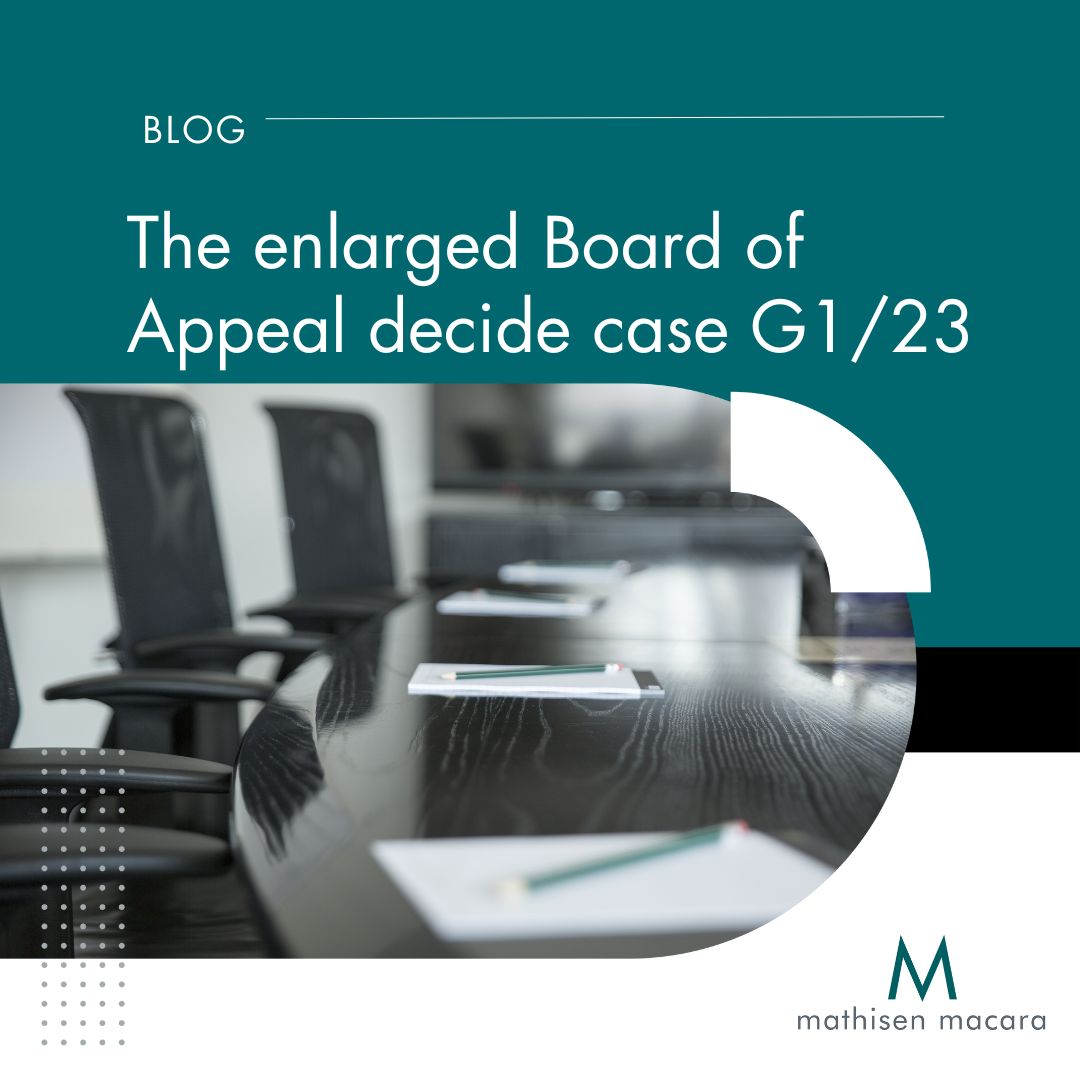The enlarged Board of Appeal decides case G1/23
In our earlier article, we discussed the oral proceedings held before the Enlarged Board of Appeal (EBA) in case G1/23. In a carefully considered decision issued on 2 July 2025 (for the full decision see: the link below), the EBA have clarified the requirements that must be met for a product which has been put on the market to constitute prior art for the assessment of novelty and inventive step under the EPC. The EBA had expressed their preliminary opinion in advance of the oral proceedings. The final decision shows that the EBA did not change their minds.
To recap, the case set out to answer whether the approach taken by the EBA in previous case G1/92 is still appropriate, and if so, to what extent. G1/92 considered whether the chemical composition of a particular product is made available to the public when that product is put on the market. It was ruled that the chemical composition of a publicly available product forms part of the state of the art if the product can be analysed and reproduced by the skilled person.
The referring Board in case G1/23 identified differing interpretations of G1/92 in the case law. This led to three questions being asked:
- Is a product put on the market before the date of filing of a European patent application to be excluded from the state of the art within the meaning of Article 54(2) EPC for the sole reason that its composition or internal structure could not be analysed and reproduced without undue burden by the skilled person before that date?
- If the answer to question 1 is no, is technical information about said product which was made available to the public before the filing date (e.g. by publication of technical brochure, non-patent or patent literature) state of the art within the meaning of Article 54(2) EPC, irrespective of whether the composition or internal structure of the product could be analysed and reproduced without undue burden by the skilled person before that date?
- If the answer to question 1 is yes or the answer to question 2 is no, which criteria are to be applied in order to determine whether or not the composition or internal structure of the product could be analysed and reproduced without undue burden within the meaning of opinion G 1/92? In particular, is it required that the composition and internal structure of the product be fully analysable and identically reproducible?
The EBA analysed in detail what is meant by the G1/92 requirement that a publicly available product be analysable and reproducible in order to form part of the state of the art. Two interpretations were considered.
(i) where a product has been put on the market but cannot be reproduced then neither the product itself nor its composition form part of the state of the art, and
(ii) where a product has been put on the market but cannot be reproduced then the product itself belongs to the state of the art, but its composition does not.
The EBA rejected both of these interpretations. They reasoned that either could lead to absurd situations by creating a legal fiction where freely available, commercial products would nevertheless be deemed not to exist when considering patentability. Or even when taken to extremis, the pool of available prior art would be reduced to almost nothing.
Instead, the EBA answered referred questions 1 and 2 with ‘NO’ and ‘YES’ respectively, concluding that:
- A product put on the market before the date of filing of a European patent application cannot be excluded from the state of the art within the meaning of Article 54(2) EPC for the sole reason that its composition or internal structure could not be analysed and reproduced by the skilled person before that date.
- Technical information about such a product which was made available to the public before the filing date forms part of the state of the art within the meaning of Article 54(2) EPC, irrespective of whether the skilled person could analyse and reproduce the product and its composition or internal structure before that date.
In reaching its conclusion, the EBA decided that the G1/92 requirement that the product be reproducible should not be taken as meaning that the skilled person must be able to re-engineer or synthesise the product from first principles. Instead, the skilled person must merely be able to be in possession of the product for it to be considered reproducible. A product put on the market clearly meets this requirement.
The EBA’s decision in G1/23 can be seen as taking a pragmatic position which is more in line with real life experience. Products which have been put on the market, along with their compositions and any associated technical information, are now clearly within the realm of state of the art. Practitioners, whether acting for patent applicants or opponents, now have clear guidance regarding what constitutes prior art and what does not.
Our attorneys here at Mathisen & Macara would be delighted to answer any questions you may have about this important case, or on any other aspects of patent law and practice.
The full decision can be found here:
https://link.epo.org/web/case-law-appeals/Communications/G_1_23_Decision_of_the_Enlarged_Board_of_Appeal_of_2_July_2025.pdf
